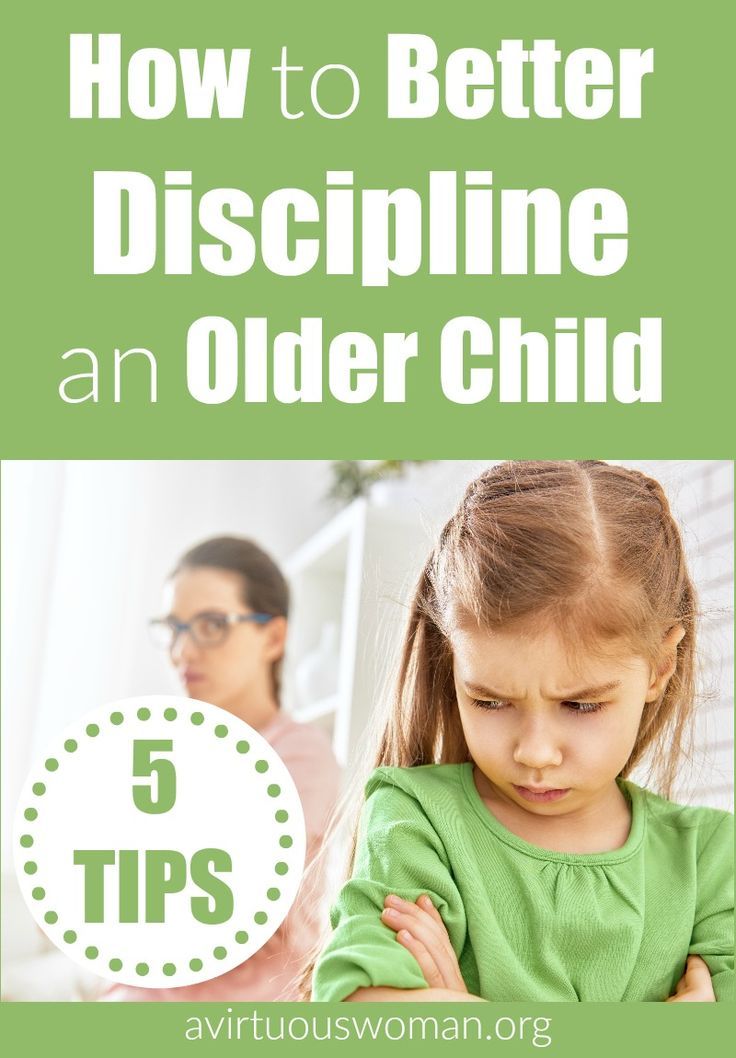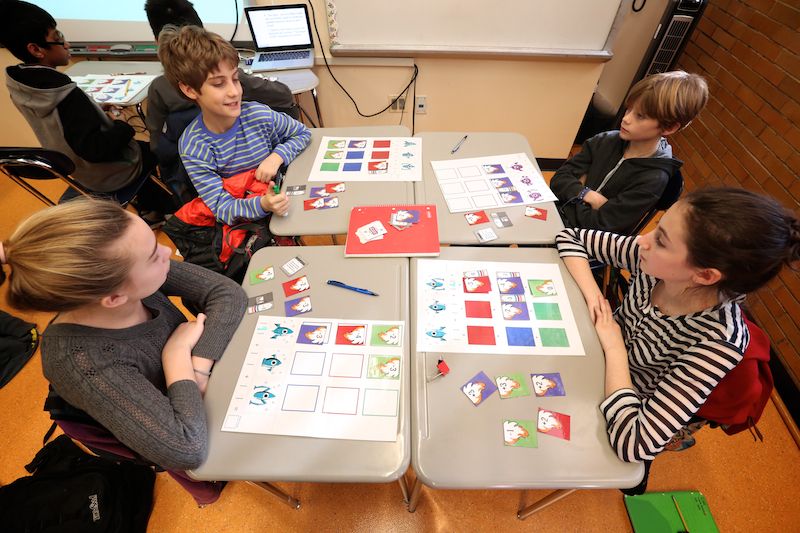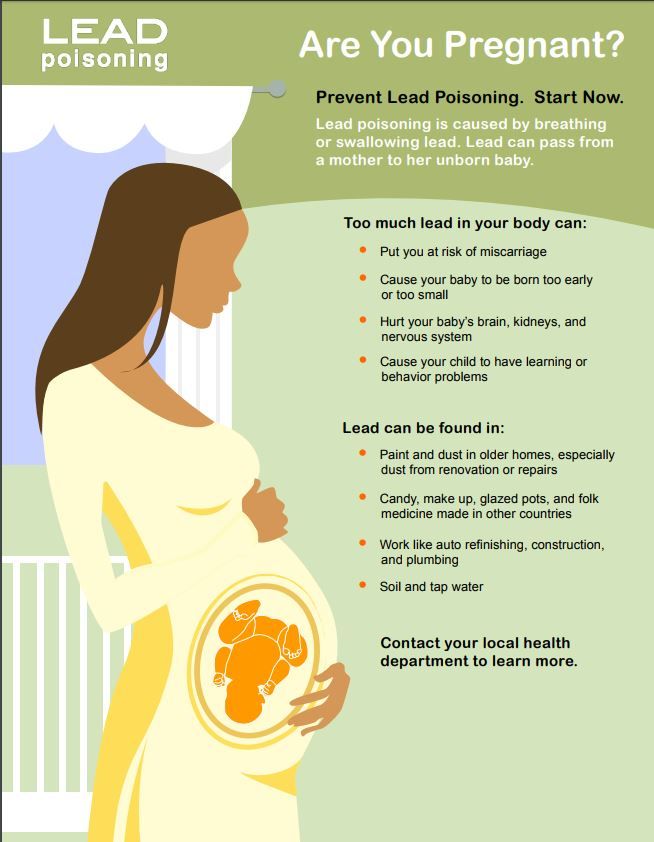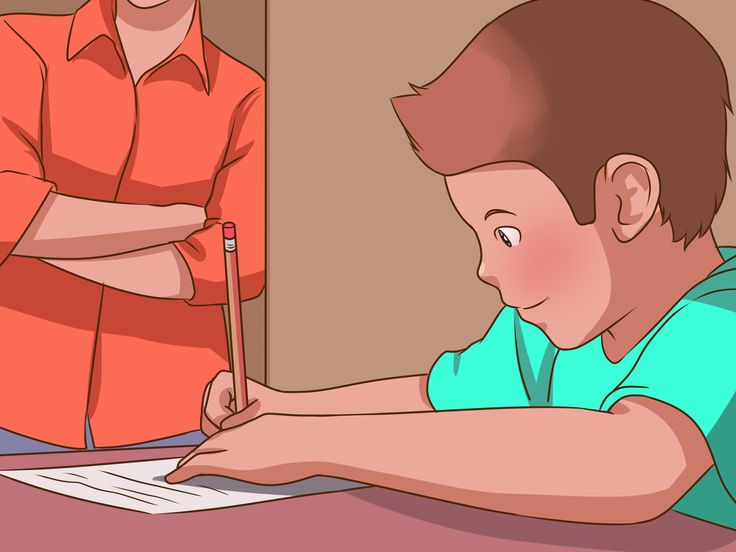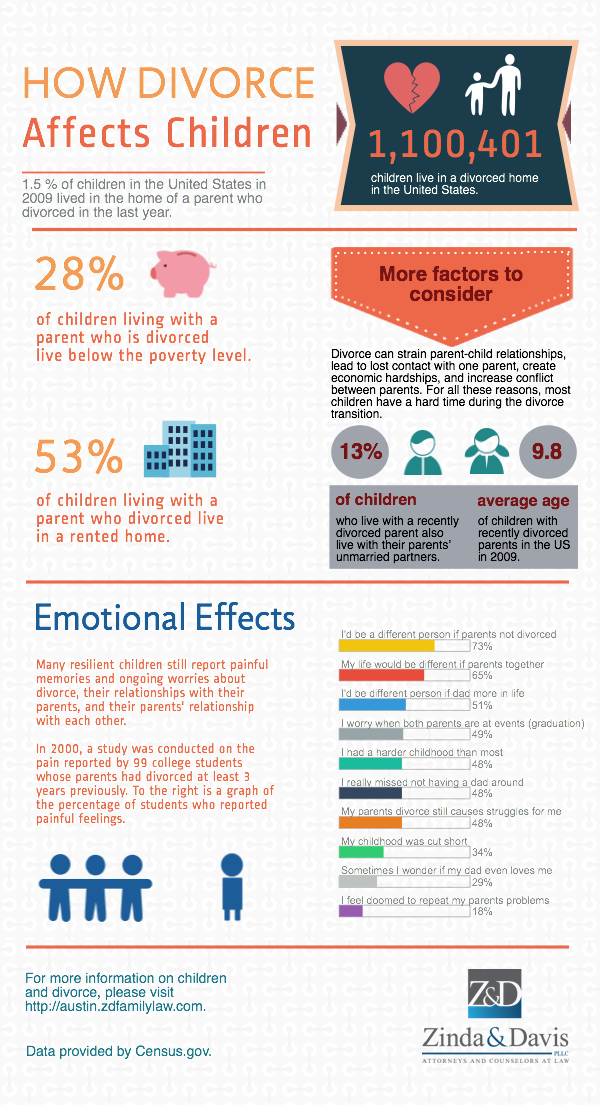Babies trying to poop
Constipation
Is this your child's symptom?
- Can't pass a stool or pain when passing a stool
- Crying when passing a stool (bowel movement or BM) or
- Can't pass a stool after straining or pushing longer than 10 minutes or
- 3 or more days without passing a stool (Exception: Breastfed and over 1 month old)
- Caution: any belly pain from constipation comes and goes. Most often, it is mild. Use the Abdominal Pain (Stomach Pain) care guide if there is constant belly pain.
Causes of Constipation
- High Milk Diet. Milk and cheese are the only foods that in high amounts can cause constipation. It causes hard pale stools. This is why you want your child to eat a well-balanced diet.
- Low Fiber Diet. Fiber is found in vegetables, fruits and whole grains. Fiber keeps stools soft, bulky and easy to pass. A low fiber diet causes hard, small stools.
- Low Fluid Intake. This can also cause stools to be dry and harder to pass.
It's rarely the only cause of constipation.
- Lack of Exercise. Exercise also keeps the bowel from slowing down. Not a cause in children unless they are confined to bed.
- Holding Back Stools Because of Pain. If passing a stool causes pain, many children will hold back the next one. This can happen with a Strep infection around the anus. It can also occur with a bad diaper rash or anal fissure (tear).
- Holding Back Stools Because of Power Struggles. This is the most common cause of recurrent constipation in children. Most often it's a battle around toilet training. If they are already trained, it may begin with the start of school. Reason: some children refuse to use public toilets. Some children postpone stools because they are too busy to sit down.
- Slow passage of food through the intestines. Most often, this type runs in families. Called slow transit time.
Stools: How Often is Normal?
- Normal Range: 3 per day to 1 every 2 days.
 Once children are on normal table foods, their stool pattern is like adults.
Once children are on normal table foods, their stool pattern is like adults. - Kids who go every 4 or 5 days almost always have pain with passage. They also have a lot of straining.
- Kids who go every 3 days often drift into longer times. Then, they also develop symptoms.
- Passing a stool should be free of pain.
- Any child with pain during stool passage or lots of straining needs treatment. At the very least, the child should be treated with changes in diet.
Imitators of Constipation: Normal Patterns and Stools
- Breastfed and Over 1 Month Old. Stools every 4-7 days that are soft, large and pain-free can be normal. Caution: before 1 month old, not stooling enough can mean not getting enough breast milk.
- Straining in Babies. Grunting or straining while pushing out a stool is normal in young babies. They are learning to relax their anus after 9 months of keeping it closed. It's also hard to pass stool lying on their back with no help from gravity.
 Babies also become red in the face and draw up their legs during straining. This is normal. Key: they continue to pass normal size stools every day. Just not every time they have some straining.
Babies also become red in the face and draw up their legs during straining. This is normal. Key: they continue to pass normal size stools every day. Just not every time they have some straining. - Brief straining under 10 minutes can occur at times at any age.
- Large Stools. Size relates to the amount of food eaten. Large eaters have larger stools.
- Hard or Dry Stools. Also can be normal if passed easily without too much straining. Often, this relates to poor fiber intake. Some children even have small, dry rabbit-pellet-like stools.
When to Call for Constipation
Call Doctor or Seek Care Now
- Stomach pain goes on more than 1 hour (includes crying) after using care advice
- Rectal pain goes on more than 1 hour (includes straining) after using care advice
- Vomits 2 or more times and stomach looks more swollen than normal
- Age less than 1 month old and breastfed
- Age less than 12 months with recent onset of weak suck or weak muscles
- Your child looks or acts very sick
- You think your child needs to be seen, and the problem is urgent
Contact Doctor Within 24 Hours
- Age less than 2 months.
 Exception: normal straining and grunting.
Exception: normal straining and grunting. - Bleeding from anus
- Needs to pass a stool but afraid to or refuses to let it out
- Child may be "blocked up"
- Suppository or enema was given but did not work
- You think your child needs to be seen, but the problem is not urgent
Contact Doctor During Office Hours
- Leaking stool
- Suppository or enema was needed to get the stool out
- Infrequent stools do not get better after changes to diet. Exception: normal if breastfed infant more than 1 month old and stools are not painful.
- Stool softeners are being used and have not been discussed with your doctor
- Toilet training is in progress
- Painful stools occur 3 or more times after changes to diet
- Constipation is a frequent problem
- You have other questions or concerns
Self Care at Home
- Mild constipation
Seattle Children's Urgent Care Locations
If your child’s illness or injury is life-threatening, call 911.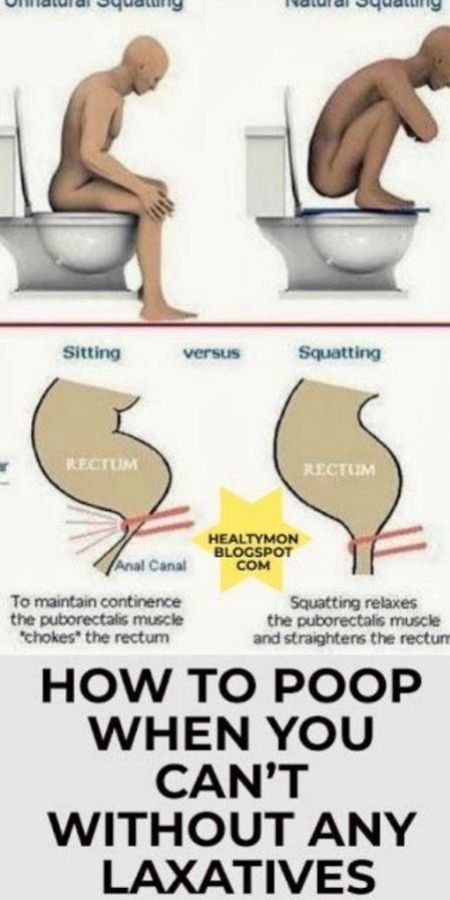
- Bellevue
- Everett
- Federal Way
- Seattle
- Virtual Urgent Care
Care Advice for Constipation
- What You Should Know about Constipation:
- Constipation is common in children.
- Most often, it's from a change in diet. It can also be caused by waiting too long to stool.
- Passing a stool should be pleasant and free of pain.
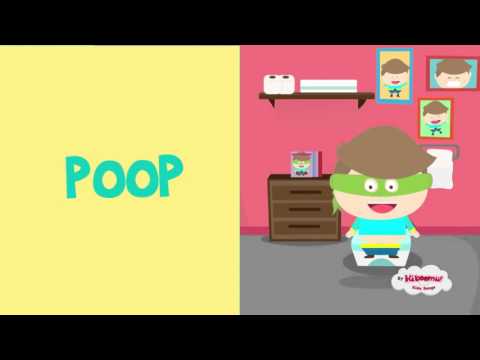
- Any child with pain during stool passage or lots of straining needs treatment. At the very least, they need changes in diet.
- Here is some care advice that should help.
- Normal Stools:
- Normal range: 3 per day to 1 every 2 days. Once children are on a regular diet, their stool pattern is like adults.
- Kids who go every 3 days often drift into longer times. Then symptoms start.
- Kids who go every 4 and 5 days almost always have pain with passage. They also have lots of straining.
- Diet for Infants Under 1 Year Old:
- Age over 1 month old only on breast milk or formula, add fruit juice.
- Amount. Give 1 ounce (30 mL) per month of age per day. Limit amount to 4 ounces (120 mL).
- Pear and apple juice are good choices. After 3 months, can use prune (plum) juice. Reason for fruit juice: approved for babies in treating a symptom.
- Age over 4 months old, also add baby foods with high fiber.
 Do this twice a day. Examples are peas, beans, apricots, prunes, peaches, pears, or plums.
Do this twice a day. Examples are peas, beans, apricots, prunes, peaches, pears, or plums. - Age over 8 months old on finger foods, add cereals and small pieces of fresh fruit.
- Diet for Children Over 1 Year Old:
- Increase fruit juice (apple, pear, cherry, grape, prune). Note: citrus fruit juices are not helpful.
- Add fruits and vegetables high in fiber content. Examples are peas, beans, broccoli, bananas, apricots, peaches, pears, figs, prunes, or dates. Offer these foods 3 or more times per day.
- Increase whole grain foods. Examples are bran flakes or muffins, graham crackers, and oatmeal. Brown rice and whole wheat bread are also helpful. Popcorn can be used if over 4 years old.
- Limit milk products (milk, ice cream, cheese, yogurt) to 3 servings per day.
- Fluids. Give enough fluids to stay well-hydrated. Reason: keep the stool soft.
- Stop Toilet Training:
- Put your child back in diapers or pull-ups for a short time.
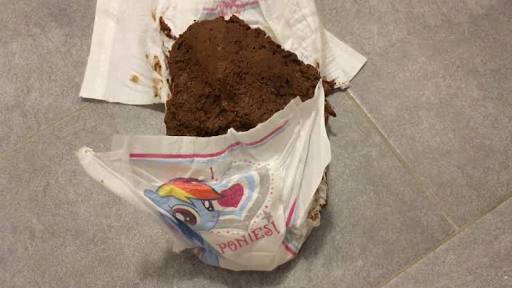
- Tell him that the poops won't hurt when they come out.
- Praise him for passing poops into a diaper.
- Holding back stools is harmful. Use rewards to help your child give up this bad habit.
- Avoid any pressure or punishment. Also, never force your child to sit on the potty against his will. Reason: it will cause a power struggle.
- Treats and hugs always work better.
- Put your child back in diapers or pull-ups for a short time.
- Encourage Sitting on the Toilet (if toilet trained):
- Set up a normal stool routine, if your child agrees to sitting.
- Have your child sit on the toilet for 5 minutes after meals.
- This is especially important after breakfast.
- If you see your child holding back a stool, also take to the toilet for a sit (if cooperates).
- During sits, stay with your child and be a coach. Just focus on helping the poop come out.
- Do not distract your child. Do not allow your child to play with video devices, games or books during sits.
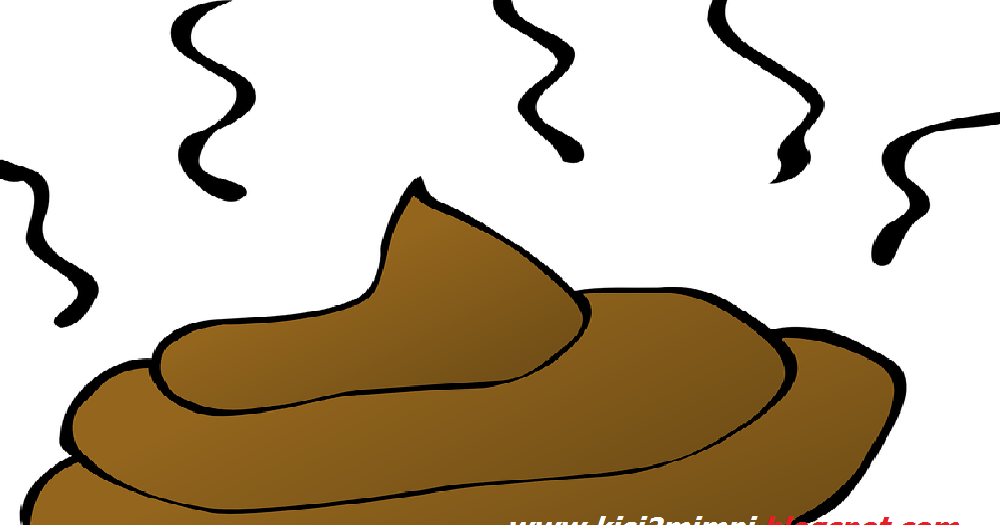
- Once he passes a normal size stool, he doesn't need to sit anymore that day.
- Warm Water to Relax the Anus:
- Warmth helps many children relax the anus and release a stool.
- For straining too long, have your child sit in warm water.
- You can also put a warm wet cotton ball on the anus. Vibrate it side to side for about 10 seconds to help relax the anus.
- Flexed Position to Help Stool Release for Babies:
- Help your baby by holding the knees against the chest. This is like squatting for your baby. This is the natural position for pushing out a stool. It's hard to have a stool lying down.
- Gently pump on the lower belly with your fingers. If no stool release in a few minutes, stop.
- Squatting Position to Help Stool Release for Older Children:
- The squatting position gives faster stool release and less straining.
- Squatting means that the knees are above the hips.

- For most children who sit on the toilet, a foot stool is needed.
- It is an important part of treating constipation.
- Stool Softeners (Age Over 1 Year Old):
- If a change in diet doesn't help, you can add a stool softener. Must be over 1 year of age.
- Use a stool softener (such as Miralax). It is available without a prescription. Give 1-3 teaspoons (5-15 mL) powder each day with dinner. Mix the powder in 2 to 6 ounces (60-180 mL) of water.
- Fiber products (such as Benefiber) are also helpful. Give 1 teaspoon (5 mL) twice a day. Mix it in 2 ounces (60 mL) of water or fruit juice.
- Stool softeners and fiber should produce regular soft stools in 1 to 3 days.
- Discuss dosage and how long to use with your doctor.
- What to Expect:
- Most often, changes in diet helps constipation.
- After your child is better, be sure to keep him on high fiber foods.
- Also, have your child sit on the toilet at the same time each day.

- These tips will help to prevent the symptoms from coming back.
- Call Your Doctor If:
- Constipation lasts more than 1 week after making changes to diet
- You think your child needs to be seen
- Your child becomes worse
And remember, contact your doctor if your child develops any of the 'Call Your Doctor' symptoms.
Disclaimer: this health information is for educational purposes only. You, the reader, assume full responsibility for how you choose to use it.
Last Reviewed: 04/24/2023
Last Revised: 12/30/2022
Copyright 2000-2023. Schmitt Pediatric Guidelines LLC.
Constipation in babies - causes, signs and treatments
Constipation in babies - causes, signs and treatments | Pregnancy Birth and Baby beginning of content5-minute read
Listen
What is constipation?
Constipation is when your baby’s poo is hard and dry, making it difficult for them to poo. Sometimes, doing a hard poo can be painful. It’s common for babies to have constipation when they are changing from formula or breast milk to solid foods.
Sometimes, doing a hard poo can be painful. It’s common for babies to have constipation when they are changing from formula or breast milk to solid foods.
What is normal?
All babies are unique, and this includes how often they poo. There is a very wide range of ‘normal’. Some babies poo after every feed. Others will only poo once every few days. When it comes to how often they poo, once in 7 days, or 7 times in one day are both fine, so long as your baby is happy and well. But while the number of poos is not critical, if your baby seems to have pain when trying to poo or has a very hard, dry poo, you can speak with their doctor or child health nurse for advice.
Why is my baby constipated?
One of the main causes of constipation in babies is a change in diet. A change in diet may include:
- changing from being formula-fed
- changing from being breastfed
- exposure to new foods and flavours
- not drinking enough liquids (breastmilk, formula or water)
It is more common for bottle (infant formula) fed babies to have constipation than breast-fed babies.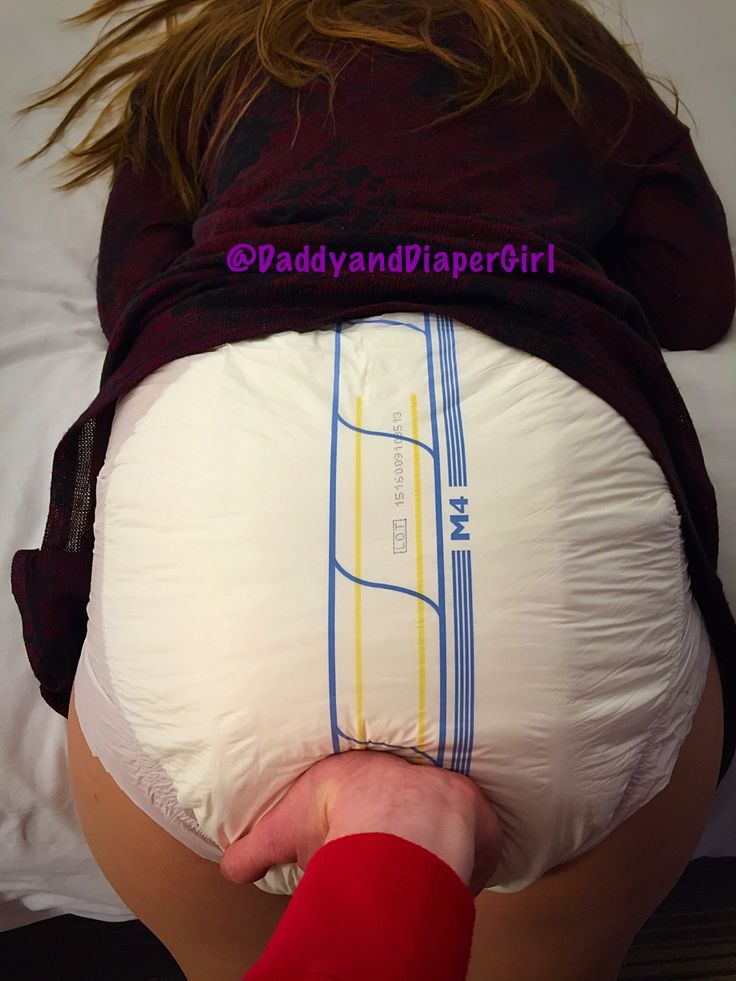
If your baby has started eating solid food, a lack of fibre in their diet may also potentially cause of constipation. Some babies simply have a natural tendency towards constipation, even when they have a good diet and drink enough fluids. This doesn’t mean they are unhealthy or unwell.
In extreme cases, rare illnesses can cause constipation such as:
- problems with nerve endings in the bowel
- problems relating to the spinal cord
- thyroid deficiency
- other metabolic disorders
Baby poo guide
Learn more about your baby's poo.
All babies are checked for these conditions, so this is usually not something you need to be concerned about. But if you are worried about your baby or are notice that pooing is painful for them, seek medical advice.
How to recognise the signs of constipation
The main signs of constipation are hard, dry poos. The following are other signs of constipation:
- Your baby may show signs of straining when trying to pass a poo.
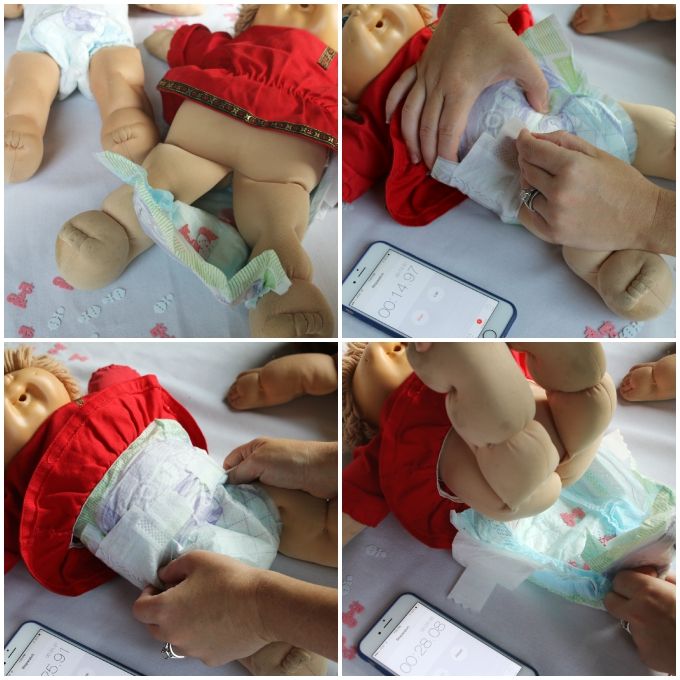
- Your baby may be unsettled, may seem fussy or irritated.
- Your baby may be eating less or feeding less well than usual.
- A tear or crack might appear in the skin around the anus, which may at times bleed.
In some cases, if your child is constipated, they may look bloated or their stomach may appear larger than usual. It can be possible to feel their poo (hard, solid lumps) while pressing softly on their stomach.
How to treat constipation at home
Try these tips to help babies who have difficulty passing poos:
- If your baby has infant formula, always measure the water first before adding the formula powder — this helps ensure that the ratio of water-to-formula is correct.
- If your baby is old enough to drink water, offer extra drinks (boiled and cooled first).
- Gently rub their stomach to help stimulate the bowel — your baby might also feel better with gentle massage to help manage the pain of constipation.
- A warm bath can help calm and settle your baby and relieve discomfort.
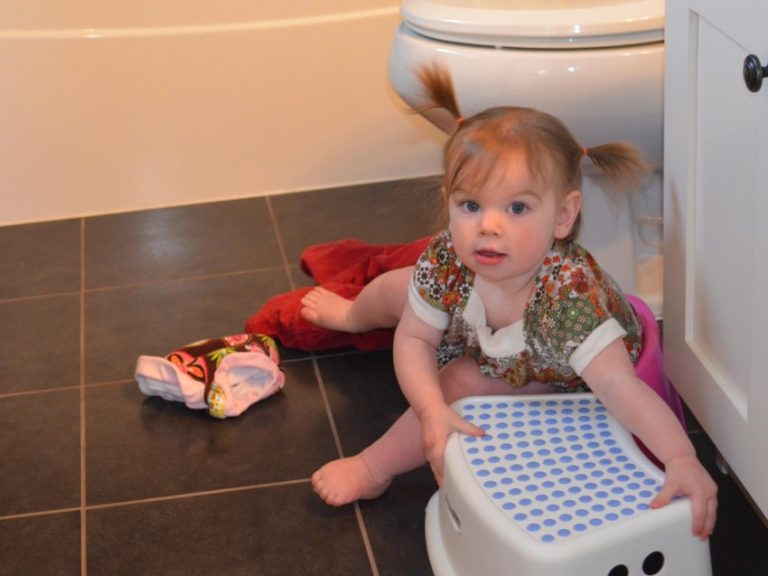
If your baby is older than 6 months, add some extra fruit and vegetables to their diet to boost their fibre intake.
If your child is older than 9 months, adding stewed prunes or apricots to their meal may help. They can have up to 3 tablespoons, 3 times a week. Cereal that has bran may also help mild constipation. Older babies can try prune juice diluted with water (half prune juice and half water). Start slowly, with 10 millilitres. Increase as needed until they can do a soft poo.
Does my child need to see a doctor?
Constipation is common. Often it will pass without intervention, or with the help of the strategies listed above. If you are worried that your baby has constipation, is uncomfortable or is in pain, their doctor can assess them and recommend baby-safe strategies. There are medical treatments for constipation that your doctor may consider, based on your baby’s circumstances.
If your baby was previously treated for constipation but still struggles to poo, it is important to go back to your doctor for a review. There are several treatments they can try.
There are several treatments they can try.
Speak to a maternal child health nurse
Call Pregnancy, Birth and Baby to speak to a maternal child health nurse on 1800 882 436 or video call. Available 7am to midnight (AET), 7 days a week.
Sources:
The Royal Children’s Hospital Melbourne (Kids Health Information 2020 - Constipation), Queensland Health (Constipation in children), Perth Children’s Hospital (Constipation in children)Learn more here about the development and quality assurance of healthdirect content.
Last reviewed: September 2021
Back To Top
Related pages
- Your child's health
- Poos and wees
- Baby poo guide
Need more information?
Constipation in babies and children | Raising Children Network
Children with constipation have hard poo that’s difficult to push out.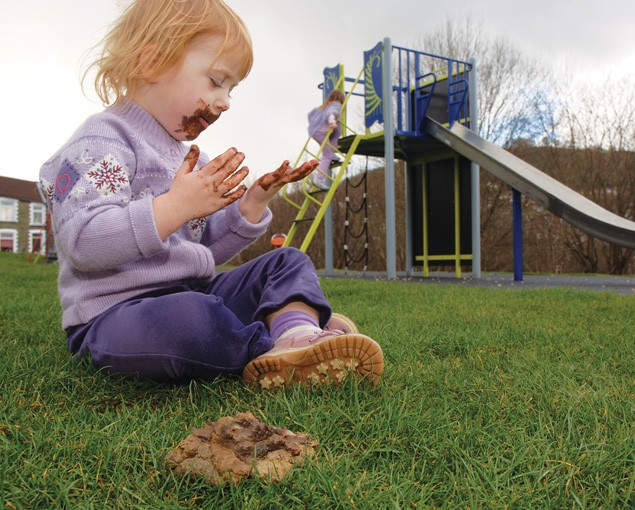 A high-fibre diet and regular toileting usually helps. Some children need laxatives.
A high-fibre diet and regular toileting usually helps. Some children need laxatives.
Read more on raisingchildren.net.au website
Colic in infants - MyDr.com.au
Colic is a pattern of unexplained, excessive crying in an otherwise healthy and well-fed baby and happens to 1 in 5 Australian babies.
Read more on myDr website
All about baby poo
Babies poo! Some poo after every feed, while others can go for days without a dirty nappy. But what you do find in the nappy can say something your baby's health - learn more here.
Read more on Pregnancy, Birth & Baby website
Common myths about babies
Find out about some of the common myths you may hear or read about young babies.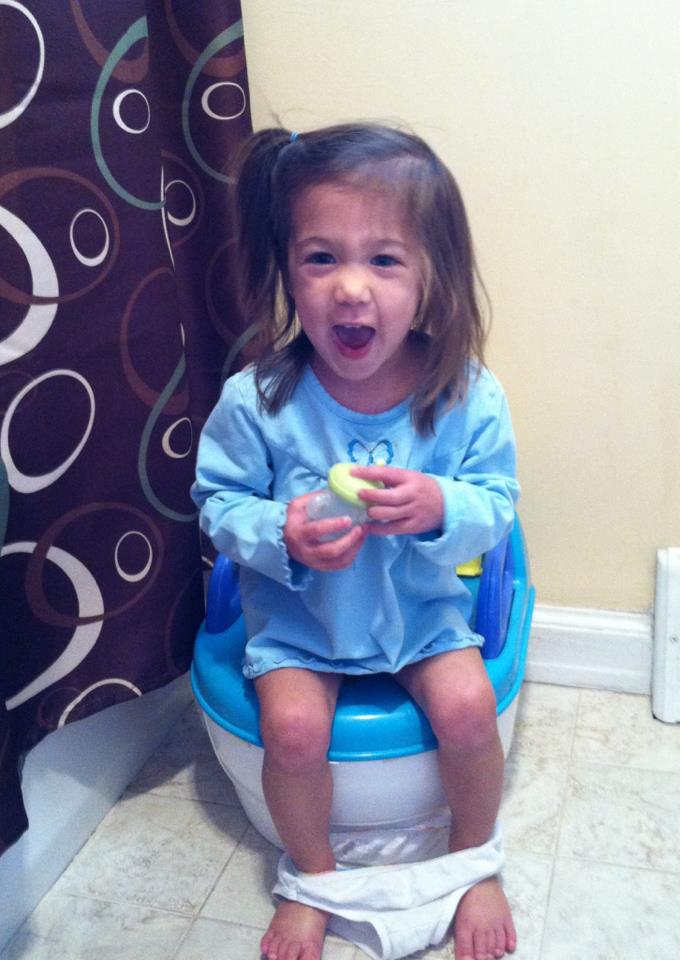
Read more on Pregnancy, Birth & Baby website
Constipation and children - Better Health Channel
A healthy diet, plenty of fluids, exercise and regular toilet habits can help relieve constipation in children
Read more on Better Health Channel website
When can babies drink water?
You may wonder when it is safe to start giving your baby water. Whether you are breastfeeding or formula-feeding, learn how and when to get started.
Read more on Pregnancy, Birth & Baby website
Poos and wees
Babies have very delicate skin and need changing soon after they wet themselves or passed a stool (poo) to prevent nappy rash and stop them from smelling.
Read more on Pregnancy, Birth & Baby website
Breast feeding your baby - MyDr.com.au
Breast milk has long been known as the ideal food for babies and infants. Major health organisations recommend that women breast feed their babies exclusively until they are 6 months old, and continue breast feeding, along with solids, until they are 12 months old or more. Breast milk has many benefits.
Read more on myDr website
What's in the nappy? - video
It may not sound like fun, but checking your baby's poos and wees will help monitor their health and wellbeing.
Read more on Pregnancy, Birth & Baby website
Breastfeeding... Is it for me? | Sydney Children's Hospitals Network
Before your baby is born, you should decide whether you wish to breastfeed your baby or not
Read more on Sydney Children's Hospitals Network website
Disclaimer
Pregnancy, Birth and Baby is not responsible for the content and advertising on the external website you are now entering.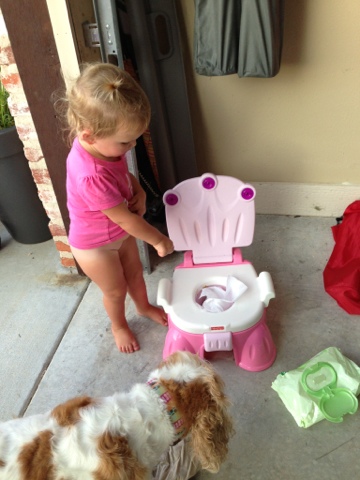
Need further advice or guidance from our maternal child health nurses?
1800 882 436
Video call
- Contact us
- About us
- A-Z topics
- Symptom Checker
- Service Finder
- Subscribe to newsletters
- Linking to us
- Information partners
- Terms of use
- Privacy
Pregnancy, Birth and Baby is funded by the Australian Government and operated by Healthdirect Australia.
Pregnancy, Birth and Baby’s information and advice are developed and managed within a rigorous clinical governance framework.
This site is protected by reCAPTCHA and the Google Privacy Policy and Terms of Service apply.
Healthdirect Australia acknowledges the Traditional Owners of Country throughout Australia and their continuing connection to land, sea and community. We pay our respects to the Traditional Owners and to Elders both past and present.
This information is for your general information and use only and is not intended to be used as medical advice and should not be used to diagnose, treat, cure or prevent any medical condition, nor should it be used for therapeutic purposes.
The information is not a substitute for independent professional advice and should not be used as an alternative to professional health care. If you have a particular medical problem, please consult a healthcare professional.
Except as permitted under the Copyright Act 1968, this publication or any part of it may not be reproduced, altered, adapted, stored and/or distributed in any form or by any means without the prior written permission of Healthdirect Australia.
Support this browser is being discontinued for Pregnancy, Birth and Baby
Support for this browser is being discontinued for this site
- Internet Explorer 11 and lower
We currently support Microsoft Edge, Chrome, Firefox and Safari. For more information, please visit the links below:
- Chrome by Google
- Firefox by Mozilla
- Microsoft Edge
- Safari by Apple
You are welcome to continue browsing this site with this browser. Some features, tools or interaction may not work correctly.
How to deal with constipation in a child?
8/15/17
A Parent's Guide to a Very Common Problem in Children with Autism
am chronic constipation in a child include:
- Very hard and dense stool.
- Pain and difficulty in emptying the bowels.
- The child has a bowel movement three times a week or less.
Talk to your child's doctor to find out if your child is constipated.
What causes constipation in children with autism?
1. Holding a stool
Some children try to hold a stool and ignore the urge to have a bowel movement. This can happen for various reasons, for example:
- Fear of the toilet.
- Reluctance to use the toilet outside the home.
- Unwillingness to interrupt the game.
- Fear of pain during bowel movements.
2. Toilet training
Children may resist and hold stool when toilet training is attempted. This can become a habit that is difficult to break later on.
3. Nutrition problems
- Lack of fiber found in fruits, vegetables and whole grains.
- Dairy products, if the child is allergic to cow's milk or consumes too much dairy products.
- Insufficient intake of water and other beverages, especially when ill.
- Changes in appetite or diet due to illness of the child.
4. Stress and changes in daily routine.
Travel, weather changes, and stress can affect bowel function.
5. Medications
Some medications, such as antacids, antidepressants, and some attention-deficit/hyperactivity disorder medications, can cause stools that are too hard.
6. Associated medical problems.
Constipation is common in children who have movement problems, including decreased muscle tone and cerebral palsy. Also, constipation is possible in case of hypersensitivity to gluten or casein.
Acute constipation and encopresis
Acute constipation
Some (but not all) children with chronic constipation may have this problem. Acute constipation can be caused by too much hard stool in the colon. As a result, the child cannot have a bowel movement for several days. Acute constipation is diagnosed by a doctor by palpation of the abdomen or by X-ray.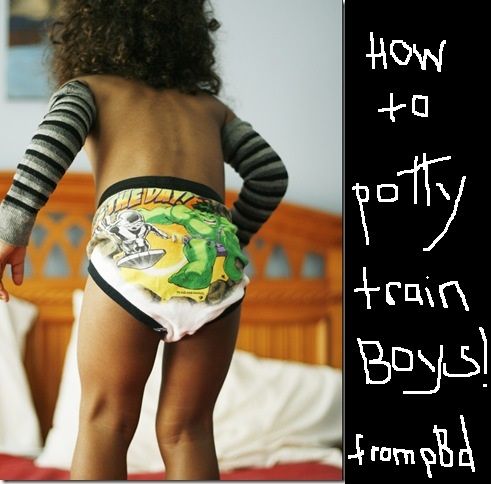 Acute constipation is often accompanied by loss of appetite and lethargy. After a bowel movement, the child feels better and the symptoms decrease.
Acute constipation is often accompanied by loss of appetite and lethargy. After a bowel movement, the child feels better and the symptoms decrease.
Encoprese
This problem occurs in some (but not all) constipated children. Encopresis means that during constipation, the child has loose stools. This is a common problem.
Encopresis can develop if a child holds a stool for so long that it becomes difficult for him to have a bowel movement. The stool becomes larger and drier. Due to the retention of large stools, the intestinal muscles get tired and relax. After the muscles relax, loose stools can seep into the underwear.
The child does not feel that this is happening and cannot control loose stools. This usually happens several times a day, causing the underwear to become dirty. Sometimes encopresis is confused with diarrhea, but the child does not actually have diarrhea because most of the stool in the intestines remains solid.
Many children with encopresis experience loss of appetite and decreased interest in daily activities.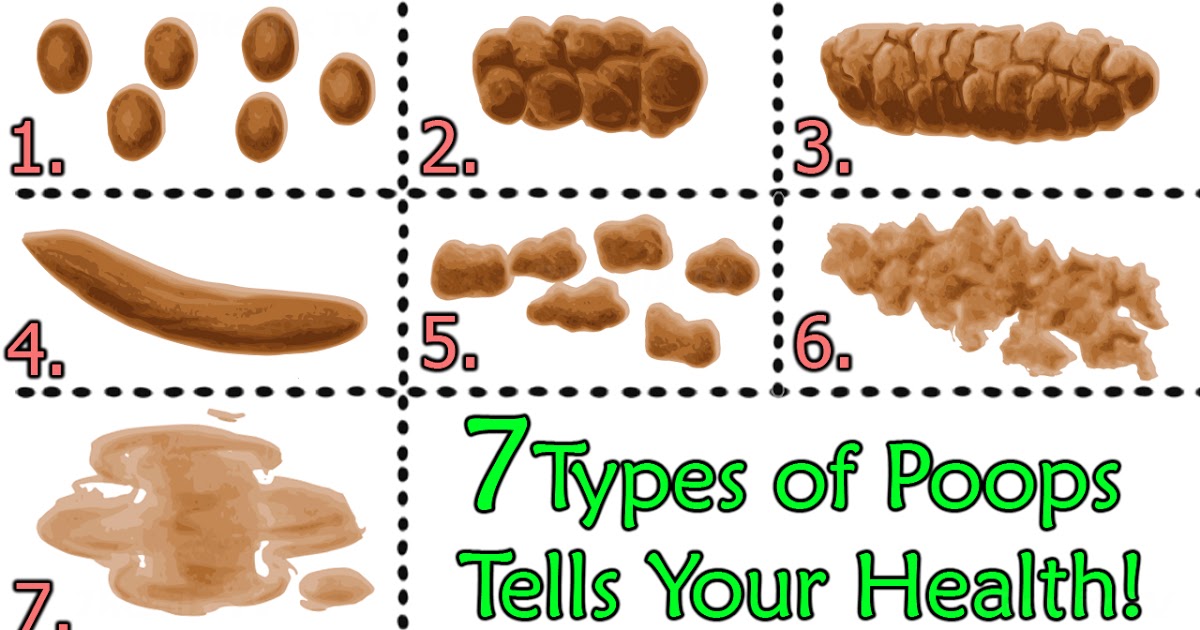 After a bowel movement, the child feels better and these symptoms decrease.
After a bowel movement, the child feels better and these symptoms decrease.
Treatment of constipation
There are three main approaches to the treatment of constipation.
Talk to your child's doctor about which type of treatment is best for you:
1. Dietary changes
- Increasing the amount of fiber in your diet will make bowel movements easier.
- Increasing fluid intake , especially water and juice, helps soften stools and reduces the chance of constipation.
2. Behavioral changes
- Regular exercise . Physical activity improves the functioning of the abdominal muscles, which facilitates bowel movements. Regular exercise, including walking, jumping rope, ball games, cycling and swimming, can help with constipation.
- Bowel training in the toilet . It is important that the child knows how to use the toilet at the first urge. The best way to teach this is through planned and extended "sit-downs" where the child is rewarded for simply sitting on the toilet for extended periods of time.
The best way to teach this is through planned and extended "sit-downs" where the child is rewarded for simply sitting on the toilet for extended periods of time.
3. Medications
Children often need medication to have regular bowel movements. These can be:
- Preparations for daily use.
- Single-dose preparations that "cleanse" the intestines in case of severe difficulty with emptying.
Increasing fiber in the child's diet
A diet high in fiber promotes regular bowel movements and prevents constipation. Fiber is a substance that the body cannot digest. There are two types of fiber - soluble and insoluble. Soluble fiber promotes the entry of water into the intestines. Insoluble fiber facilitates the passage of stool through the intestines. Both types of fiber are needed to prevent constipation.
Fiber is an important part of a healthy diet. A lot of fiber is found in foods such as fruits, vegetables, whole grains, legumes, nuts, and seeds. They also contain a lot of protein, vitamins and minerals. A diet high in these foods is the best way to get enough fiber.
They also contain a lot of protein, vitamins and minerals. A diet high in these foods is the best way to get enough fiber.
Where to find fiber
When shopping for food, you can check the nutritional information of the product, including the fiber level. Good choices are foods that contain at least 2 grams of fiber per serving.
When shopping, look for products that contain whole grains, whole grain flour, and oatmeal. Perhaps there are options for your child's favorite foods with whole grains, that is, higher fiber content. For example, whole-grain cheese crackers, whole-grain wheat flour bread, and high-fiber cereals may be suitable for you.
Recommended Fiber Values
— Ages 1 to 3: 19 grams per day (for boys and girls).
- Ages 4 to 8: 25 grams per day (for boys and girls).
- Ages 9 to 13: 31 grams per day for boys and 26 grams per day for girls.
Examples of high fiber foods
- White beans: 9.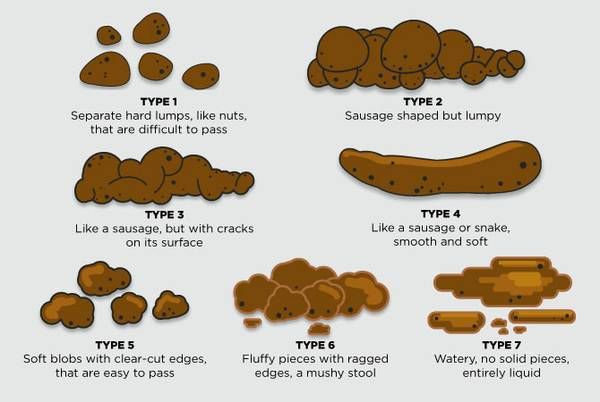 5 grams per 1/2 cup.
5 grams per 1/2 cup.
- Oatmeal: 8.8 grams per 1/2 cup.
- Red beans: 8.2 grams per 1/2 cup.
- Beans: 7.5 grams per 1/2 cup.
- Pear (with skin): 4.3 grams per small pear.
- Raspberries: 4.0 grams per 1/2 cup.
- Baked potatoes (with skin): 3.8 grams per piece.
- Almonds: 3.3 grams per 30 grams.
- Apple (with skin): 3.3 grams per piece.
- Banana: 3.1 grams for one medium-sized piece.
- Orange: 3.1 grams per medium sized piece.
- Peanut butter: 3.0 grams per 2 tablespoons.
- Broccoli: 2.8 grams per 1/2 cup.
- Green peas: 2.5 grams per 1/2 cup.
- Avocado: 2.3 grams per 1/2 cup.
- Corn: 1.6 grams per 1/2 cup.
- Strawberries: 1.5 grams per 1/2 cup.
- Wild rice: 1.5 grams per 1/2 cup.
- Raisins: 1.4 grams per 1/2 cup.
- Popcorn: 1.2 grams per 1 cup.
Increasing fiber and fluid in the child's diet
It is advisable to offer children foods rich in fiber from an early age so that their use becomes a lifelong habit.
If your child is currently constipated, it is important to increase fiber levels very gradually over 2-3 weeks. Too much fiber in the diet can worsen constipation or cause gas, abdominal pain and diarrhea.
Increasing fiber will only be effective if the child also starts drinking more fluids. Make sure your child doesn't just start eating more fiber, but also starts drinking more water and juice.
How to Increase Fiber Without Child Resistance
Children with autism often resist change, especially dietary changes. Parents need to be patient and try different approaches, for example:
- Switch to crackers and whole grain pasta.
- Try whole grain bread and pizza. Many types of whole-grain bread do not differ in appearance from ordinary white bread.
- Offer your child whole grain muesli or popcorn as a snack.
— Offer the child dried fruit as a sweet treat (prunes, dried apricots, raisins).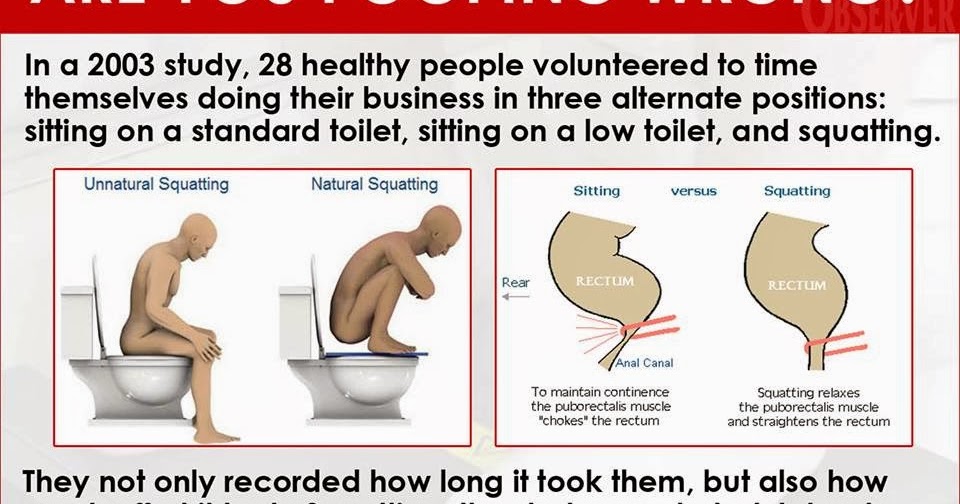
- Try to make cocktails from frozen fruits or berries based on juice or milk.
- Offer your child carrot, bell pepper, or celery sticks that can be dipped in peanut butter, hummus, or salad dressing.
— Add shredded vegetables or mashed vegetables to your child's favorite foods, such as pasta or pizza.
- Make funny faces or figures out of slices of fruits and vegetables.
- Invite the child to dip fruit slices in nut butter or his favorite kind of yogurt.
- Bake cookies, muffins or pies with whole wheat flour.
Increasing fluid intake
Sufficient water is essential to maintain a healthy body. It is found in both foods and drinks. As you increase the amount of fiber in your diet, you also need to increase your fluid intake.
How much fluid do you need?
- Follow your thirst. The amount of water a child needs varies depending on physical activity and what the child eats. Therefore, it is very important to monitor the signs of thirst in a child.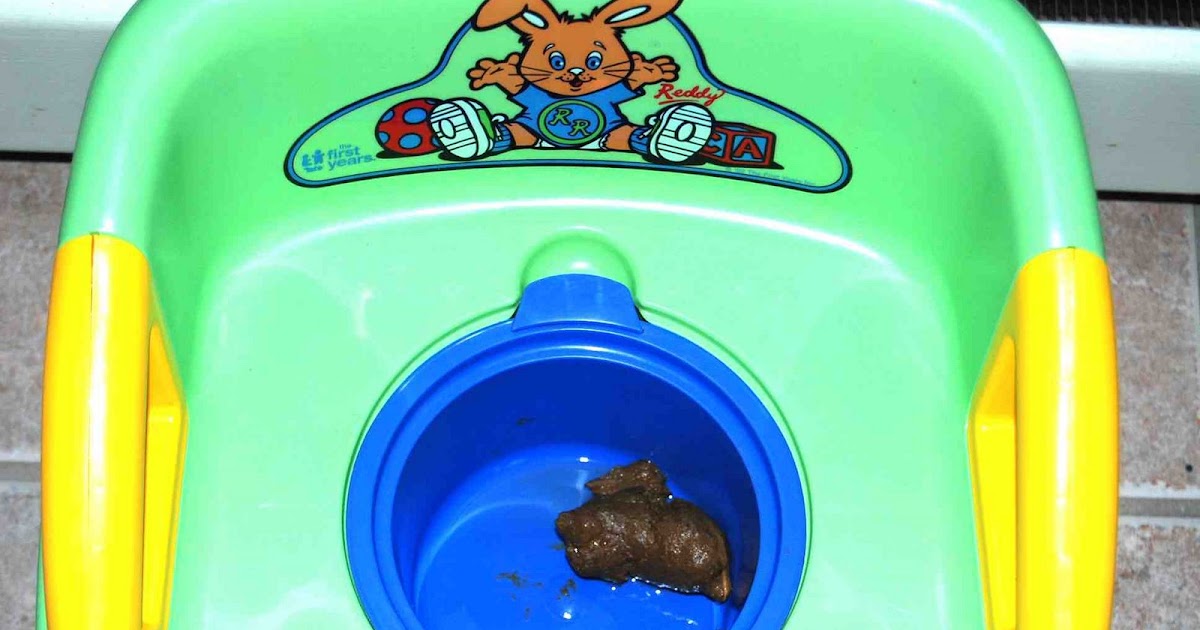
- When a child drinks enough water, his urine becomes clear, light yellow in color. Dark, tea-colored urine usually means your child needs to drink more.
Fluid types
1. Water: the best source of fluid.
2. 100% juice: good for health, but should be limited.
- 120-180 ml per day for children under 6 years old
- 240-360 ml per day for children over 6 years old
- Some juices (pear, apple, plum) contain sugars that act as a natural laxative and may help with constipation.
3. Milk:
- An important part of a child's nutrition.
— Excessive consumption of milk can lead to constipation.
- Desirable rate for milk: 480-720 ml per day (2-3 cups).
4. Sports drinks and drinks with electrolytes:
- They often have added sugar.
- Not the best choice for children.
- Check with your doctor before giving these drinks to your child.
5. Fruit drinks, soft drinks:
- They usually have added sugar.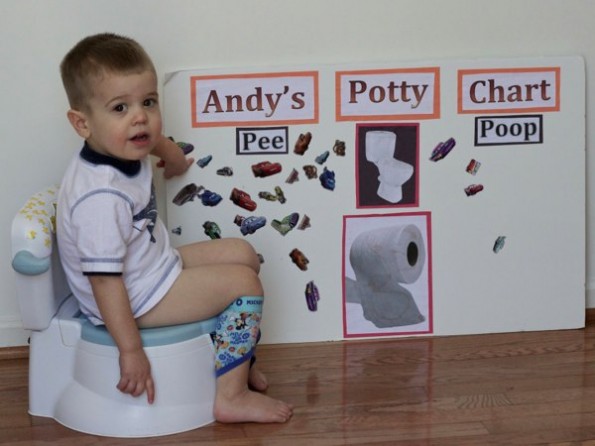
- Not the best choice for children.
- It is better to save them for special occasions, such as holidays, you should not give them to the child regularly.
Fluids and constipation
It is very important to increase fluid intake at the same time as increasing fiber. Fluid helps soften stools and make bowel movements easier.
- Some juices (pear, apple, plum) are natural laxatives.
— It is advisable to give the child a lot to drink between meals, this contributes to regular bowel movements.
- Drinks with a lot of sugar, caffeine or "fortified with vitamins" can increase constipation.
Tips for increasing fluid intake
— Encourage your child to drink water between meals, on a full stomach the child may drink too little.
- Offer your child fruits with a high water content, such as grapes, oranges, or watermelon, as snacks and treats.
— Keep a bottle or cup of water handy so your child can always have a drink. Add some citrus juice to your water to make it taste better. Or try adding some other drink to the water.
Add some citrus juice to your water to make it taste better. Or try adding some other drink to the water.
- Lead by example. Children are more likely to drink water when they see their parents or siblings drinking water.
Toilet training
In case of constipation, it is very important to teach the child to use the toilet as soon as he feels the first urge. The easiest way to teach this is with a daily period of time when the child sits on the toilet for a long time. When a child gets used to sitting on the toilet for a long time, it will be easier for him to relax the muscles that hold the stool. With daily toilet seating time, your child will become less likely to hold a stool. When the child stops holding the stool, the intestines return to normal size and become more sensitive.
How to teach your child to sit on the toilet for a long time every day
1. Be patient with yourself and with your child. Learning a new skill, especially this skill, is never easy.
2. Start by teaching your child to sit on the toilet, even if he does not defecate:
- Start with 1-2 minutes. Very slowly increase the time to 10-12 minutes.
- Use a visual timer to let your child know how long to sit.
- Offer the child some quiet activity while he sits on the toilet. For example, reading a book, drawing, playing a handheld computer game, listening to music or audio books.
- Try to save the child's favorite pastime for sitting on the toilet and do not offer it at other times.
- Praise your child even for small progress.
- Never force a child to sit on the toilet and never force him to sit on it unless you are working with a behavior specialist to help you do it safely.
3. Choose a time for your child to use the toilet.
- Making toilet use a regular part of a child's daily routine will help develop a normal bowel habit.
— Children with autism often like routine. Making toilet seating a part of the daily routine will reduce the risk of child resistance.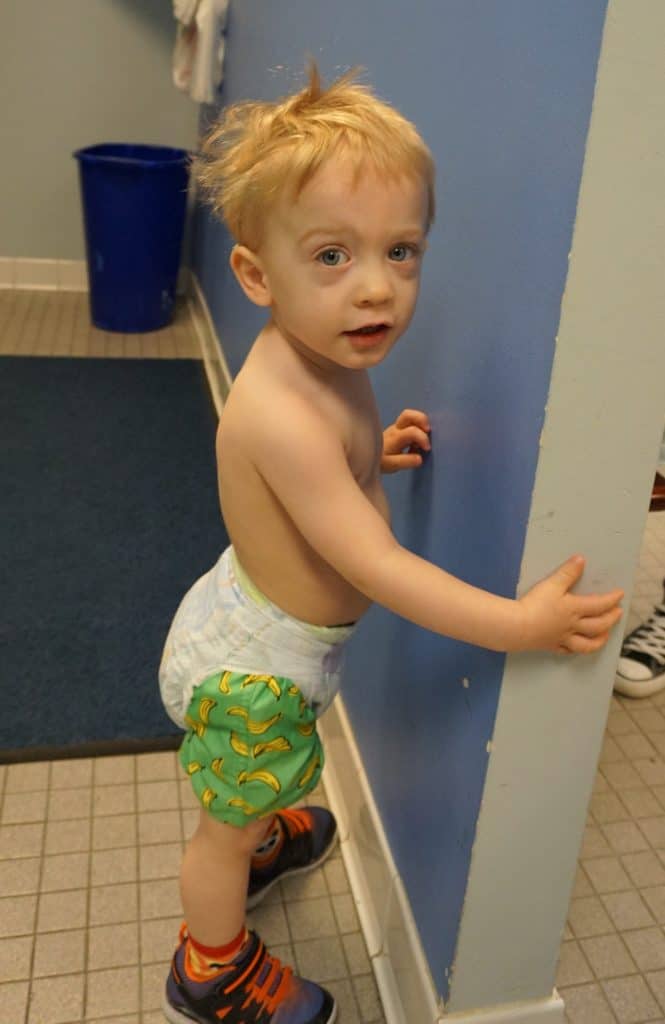
- Try using a visual timetable with pictures, one of the items being toilet time.
— If your child is most likely to have a bowel movement at some time of the day, try to schedule toilet seating for that time.
— Morning is the best time for most people, but it may not be suitable for a child who will be rushed to kindergarten or school in the morning.
- For some children, the best time is after coming home from school or kindergarten.
4. Make sure your child is comfortable.
- Choose the toilet seat or potty that is most comfortable for your child.
— Use a child seat for the toilet if the normal seat is too big for the child.
- Use the footrest if the child's feet do not touch the floor.
How to teach a bowel movement in the toilet
1. Make sure your child sits on the toilet for long periods of time 1-2 times each day.
2. Teach your child that "poop goes down the toilet" by emptying dirty diapers or underwear.
3. Try to time your child to sit on the toilet when you think your child is most likely to have a stool.
4. Try to stimulate the gastrocolic reflex before sitting on the toilet. This reflex occurs after eating or drinking and allows the bowel muscles to expel stool after eating. To stimulate this reflex, try to get your child to eat or snack, and drink a warm drink before sitting on the toilet.
5. Watch for possible signs in the child's behavior. If you notice that he wants to use the toilet, then take him there. Signs may include:
- Changes in facial expressions.
- Attempts to go to a quiet part of the house.
- Muscular tension.
Positive reinforcement
- Start with rewards for your child just sitting on the toilet.
- When the child begins to empty his bowels on the toilet, start rewarding him for it.
- Small rewards that the child receives immediately after the desired behavior work best.
- Give rewards less frequently over time.
Try not to use food as a reward. Instead, you can reward your child with:
- Sing your favorite song with your child.
- Hugs, tickling, verbal praise.
- Favorite game with a child.
- Stickers that will allow the child to track their progress.
- Time for your favorite pastime.
- Tokens (in the form of stickers, stars or other items) that can then be exchanged for very large rewards, such as a trip to the cinema or to the park.
Many children with autism have special interests. They can be used when planning rewards. For example, if a child is interested in cars, then as a reward, he can look at car magazines. If a child loves trains, then he can receive stickers with trains as a reward.
Positive rewards lead to the desired changes in behavior much faster than any punishment or criticism.
If the child is dirty
- Say something like "I noticed that you are dirty" or "Please change.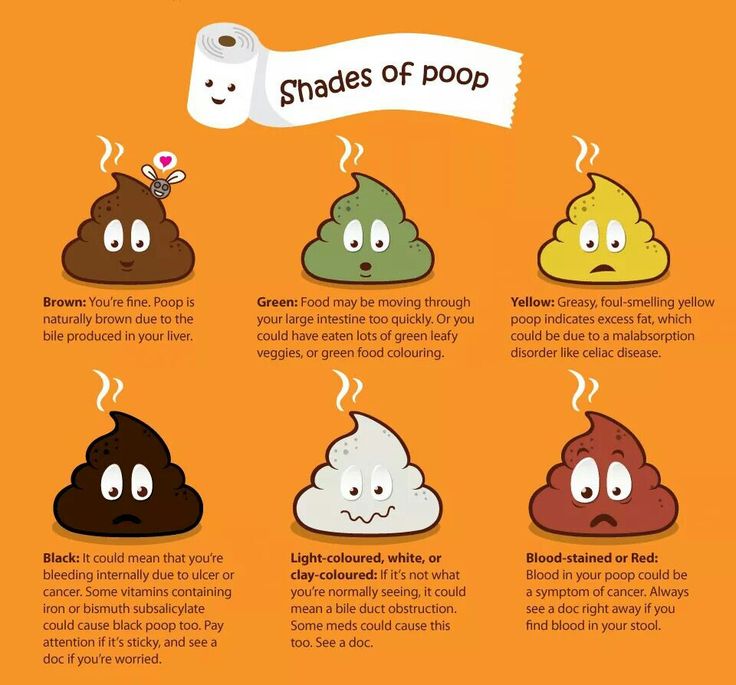 "
"
- Help the child to do this as needed.
— Do not scold the child or draw attention to what has happened.
If the child does not want to sit on the toilet
- Try to get the child as close to the toilet as possible when he begins to have a bowel movement. If the child does it in diapers while standing, then try to have him do it while standing in the toilet.
- When the child has defecated in the diaper, throw the contents of the diaper down the toilet in front of the child.
- Teach your child to sit on the toilet with their clothes down. Give your child a toy that can keep him busy for a while.
- Over time, move on to having the child sit on the toilet with the lid up but wearing a diaper.
- When the baby is comfortable sitting on the toilet with the lid up, cut a hole in the diaper and enlarge it over time. Try to have the child sit on the toilet in a diaper while having a bowel movement.
Specialist help
Very often it is difficult for a family to change what happens at home. Toilet training can be a very complex behavioral problem. Some families need additional specialist support. Signs that the family needs more help include:
Toilet training can be a very complex behavioral problem. Some families need additional specialist support. Signs that the family needs more help include:
- The child becomes very upset when taken to the toilet.
- Child holds stool longer and longer.
— Constipation progresses in the child.
— Everything connected with the toilet causes tantrums or aggression in the child.
Specialists may include child psychologist, behavioral analyst, pediatrician. Sometimes staff at the child care facility that the child attends can help find the right specialist.
Daily preparations
— May be started immediately if the child does not have acute constipation.
- Taken orally.
- Most effective when taken daily.
Purpose of taking the drug:
- Soft stools and bowel movements every day.
- All stool comes out of the bowels.
Dosage of the drug:
- The initial dose of the drug must be prescribed by a doctor.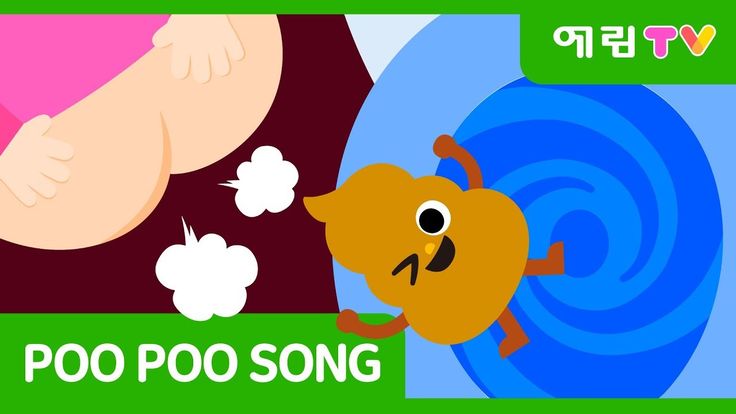 Sometimes the dosage needs to be varied. Talk to your doctor about this, he will help you change the dosage.
Sometimes the dosage needs to be varied. Talk to your doctor about this, he will help you change the dosage.
When it is necessary to increase the dosage of the drug:
- Small and hard stools.
- The child does not have a bowel movement every day.
- The child has difficulty emptying the bowels or is in pain.
When to reduce the dosage of the drug:
- Loose stools.
— The child has abdominal pain or cramps.
Duration of drug treatment
— As a rule, the course of treatment lasts at least 6 months.
— After 6 months of daily bowel movements, the doctor may decide to gradually reduce the dosage of the drug.
- If you stop taking the drug before the intestines return to normal, then constipation will begin again.
— It is important to make sure that the child has soft stools every day.
How do drugs to treat constipation work?
There are three types of laxatives.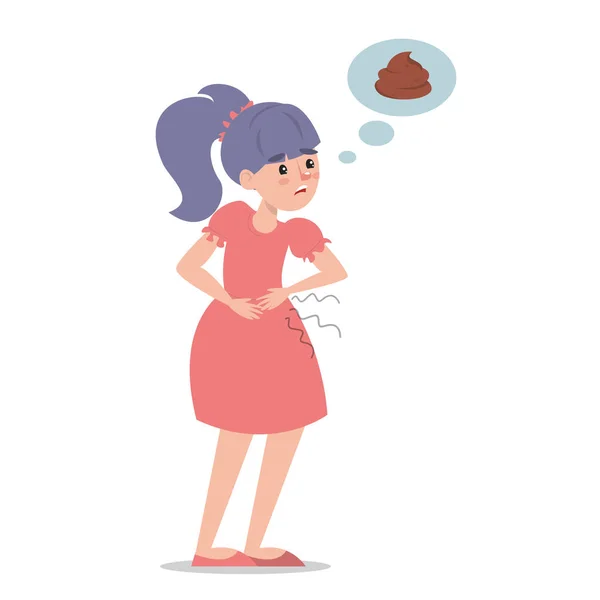 They act differently.
They act differently.
1. Osmotic laxatives. They carry water into the stool to keep it soft. Safe and often given to children. Usually taken every day. Suitable for long term use.
Examples: polyethylene glycol without electrolytes, magnesium hydroxide, magnesium citrate, lactulose, sorbitol.
2. Stimulant laxatives. They promote contractions of the intestinal muscles and promote stool in the intestines. As a rule, they are prescribed for a single dose.
Examples: senna, bisacodyl.
3. Lubricating laxatives. Facilitate the passage of stool through the intestines with an oil base.
Examples: liquid paraffin, glycerin suppositories.
Acute constipation medicines
Acute constipation occurs when large masses of hard stool block the intestines. If the doctor thinks that there is a blockage in the intestines, then as a first treatment option, he may prescribe a drug that will "cleanse" the intestines.
Your doctor will work with you to determine the best type of drug. Sometimes drugs that are taken by mouth are best. Sometimes drugs that are injected into the intestines are better suited. This "clearing" usually takes 2-3 days. It is best to spend it on the weekend or on vacation. The child will need to spend 2-3 days near the toilet and use it often.
These drugs can only be prescribed by a doctor. He will tell you how long and how often to take the drug.
Enema procedure
Most cases of constipation in children are treated with oral medications. In some cases, children need a drug that is injected into the rectum. Talk to your doctor about what treatment is best for your child. Do not give your child an enema without talking to the doctor first. Below is information about giving an enema, if needed.
How to prepare a child for an enema
- Explain the procedure to the child in a way that he can understand, perhaps with illustrations.
- Let the child look at and touch the enema bottle.
- Touch the tip of the enema to his hand so he knows what it's like.
- Help your child practice beforehand how to lie down properly during an enema.
Enema Preparation
— Read the enema instructions very carefully. Check out the pictures and instructions in the instructions.
- Make sure the enema is at room temperature.
- Prepare everything you need: an enema bottle; towel on which the child will lie; pillows; music, a favorite toy, or other items to help your child stay calm; wet cleansing wipes.
Decide where you will give the enema. Sometimes it's best to put the baby on a blanket or large towel on the bathroom floor next to the toilet.
- Place towels and/or pillows for your child to lie down comfortably.
- Have another person stand at eye level with the child during the procedure - read to him, sing, talk, play music or otherwise distract him and help him lie still.
How to give an enema
1. Wash your hands.
2. Remove the protective cap from the enema tip. The tip should have a lubricant that makes it easier to administer the enema.
3. Help the child lie on his left side with his knees pressed against his chest.
4. Have your helper talk or sing to your child in an effort to soothe and encourage.
5. Hold the enema in one hand. With your other hand, spread your buttocks until you see the anus.
5. Insert the end of the bottle very carefully into the anus. Don't force it in.
6. Position the end of the enema towards the child's back. The contents of the enema should fall on the intestinal wall, and not on the stool.
7. Squeeze the enema until nearly the entire volume has been delivered.
8. If possible, try to have the child lie down for 15-20 minutes. You can hold on to his buttocks to prevent him from pushing out the contents of the enema too soon.
9. If your child wears diapers, put on a diaper.
10. If the child uses the toilet, then put him on the toilet after 15-20 minutes. The liquid should go down the toilet along with the stool.
If at any stage the child becomes very upset, starts crying, screaming, kicking, then it is normal to stop the procedure. Talk to your doctor about other treatments for constipation.
We hope that the information on our website will be useful or interesting for you. You can support people with autism in Russia and contribute to the work of the Foundation by clicking on the "Help" button.
Parenting children with autism, Nutrition and digestion, Concomitant diseases
what to do with constipation in a newborn, infant and children of different ages at home
Constipation is one of the most common diseases in pediatrics. Most often, this is a functional pathology, that is, the problem is associated with impaired functioning of the gastrointestinal tract. In 95% of cases, children do not have any chronic diseases, organic causes or malformations (1).
But how can parents understand why a child cannot go big and how to help a child in such a situation? KP understands together with pediatricians.
What you need to know about constipation in children
| Constipation in infants | In infants, we focus not on the frequency of stools, but on the density of feces and the behavior of the child. Since the frequency of stools in infants is different, it is not easy to recognize constipation. A problem may be signaled by dense, thick, dark-colored stools. It is also necessary to pay attention to how the baby behaves when emptying the intestines: if he cries or screams, then this means that he may have constipation.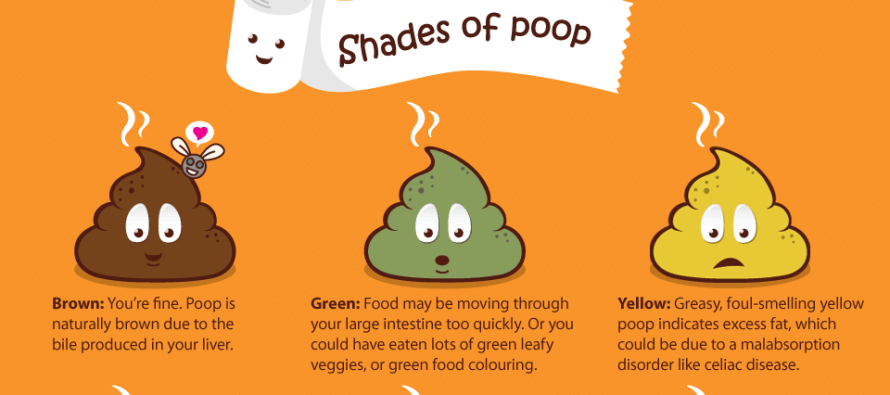 |
| Constipation in a child older than 2 years old | If a child older than 2 years old began to go to the toilet less often than before, and during bowel movements the baby has to strain hard, the stool looks dry, hard and dense, then you should see a doctor. The pediatrician will select the appropriate diet and treatment for the child. |
| The main causes of constipation | Most often, constipation is caused by functional disorders. For example, in infants, problems are explained by the immaturity of the intestines. Also, stool retention can be the result of nutritional disorders, when there is not enough water in the diet, a lot of flour and sweets. |
Baby cottage cheese can cause constipation in a child. Constipation may occur during the transition from breastfeeding to artificial or with the introduction of complementary foods. For example, cottage cheese contains calcium salts. A large amount of this substance can lead to compaction of feces. | |
| A child's difficulty with stool may be related to the start of kindergarten | If the child does not walk big in the morning, the desire to go to the toilet may arise later, when the baby is in kindergarten. Many children are embarrassed to ask to use the toilet, use the toilet in unfamiliar conditions or in the presence of strangers. As a result, the child deliberately delays defecation. This leads to the accumulation of feces and the difficulty of their exit later. When going to the toilet, the child may experience pain. As a result, the child develops “psychogenic constipation” (2). |
| Constipation can be cured without medication | Constipation, not associated with any diseases, but caused by lifestyle, in 70% of people are treated without medication, you just need to adjust the daily diet, expand physical activity. However, more than 80% of people with functional constipation do not seek these recommendations from a doctor and self-medicate (3). |
Causes of constipation in children
The main factor in stool retention in babies is a violation of the function of the muscular membrane of the intestine with a deterioration in its peristalsis.
There are two types of constipation: organic and functional. Organic constipation is caused by the presence of certain diseases (for example, Hirschsprung's disease, dolichocolon) and become their consequence. Also, organic constipation is associated with anomalies in the development of the intestine and anorectal zone (fissures, hemorrhoids), tumors. Problems with bowel movements can be caused by metabolic causes (hypothyroidism, cystic fibrosis, celiac disease) or an allergy to cow's milk proteins.
But parents should not panic if their child cannot go to the toilet in a big way. Most often, children are diagnosed with functional constipation. The causes of such problems can be: a violation of the diet, a psycho-emotional factor, as well as a lack of toilet skills.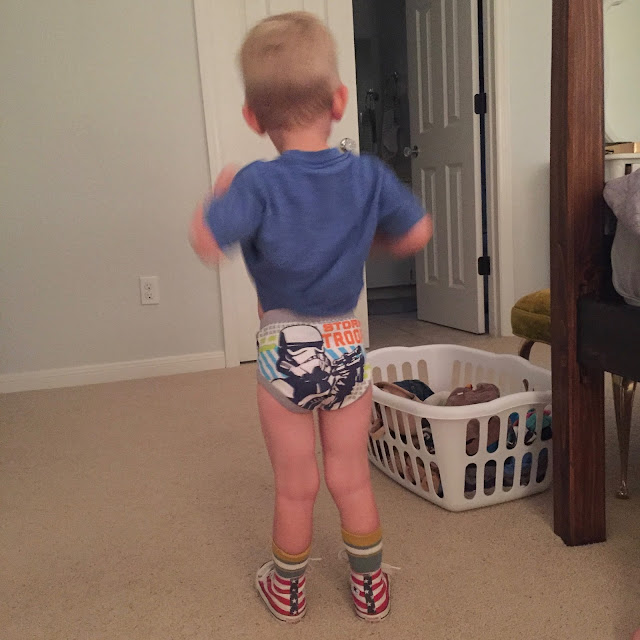
Below we will take a closer look at some of the reasons that can provoke constipation in a child.
Congenital diseases
Manifested in newborns and at an older age. These include cystic fibrosis, Hirschsprung disease, anorectal malformations, metabolic disorders (eg, hypothyroidism, hypercalcemia, hyperkalemia), spinal cord pathology (4).
Only a doctor can diagnose a particular disease, so if a child often suffers from constipation, you should definitely consult a doctor. Especially if there are other warning signs.
Malnutrition
If the newborn is bottle-fed or the infant is fed heavy, protein-rich foods, then constipation is more likely to occur. In order to prevent the problem, it is important to continue breastfeeding.
Photo: Vladimir Godnik, globallookpress.comLack of water in the body
If the baby does not drink enough liquid, then the feces in the intestines become hard. As a result, emptying is difficult, it can cause discomfort to the child.
As a result, emptying is difficult, it can cause discomfort to the child.
Antibiotics
Constipation may be a side effect of certain medications. Antibiotics and other medicines can adversely affect the intestinal microflora of a child.
Psychological problems
In a child (usually 2 years of age), intestinal motility may slow down due to psycho-emotional stress. For example, children often refuse to go to the toilet in kindergarten, or in other new or unfamiliar surroundings. The kid specially suffers, which leads to hardening of feces. In some cases, the child may hold back a bowel movement if he had a painful experience: remembering the discomfort, the next time the baby can avoid this process. Parents can unwittingly provoke the appearance of constipation in a child, accustoming the baby to the potty too persistently and demandingly.
There can be many reasons for psycho-emotional constipation. It is important to notice the problem in time and contact a specialist.
What to do if the child cannot go big
The treatment of constipation requires a comprehensive approach. In each case, an individual treatment regimen is prescribed, depending on the cause of constipation.
First of all, you need to adjust the child's diet and lifestyle. It is important to drink more water and increase the proportion of fruits, vegetables and other sources of fiber for older children, and infants can add prune juice to their newborn formula. For constipation, it is recommended to reduce the amount of fixing foods, such as milk, cheese.
In addition to correcting diet and eating behavior, various certified pharmaceutical preparations can be used to solve the problem. Usually doctors prescribe fast-acting laxatives for children: drops, syrups, powders, granules, tablets and capsules. The dosage and form of the drug is determined by the doctor, taking into account the age category. Laxatives increase the peristalsis of the child's intestines, and medications help stimulate the motility of the gastrointestinal tract. Drug treatment should be prescribed by a pediatrician, you should not abuse laxatives, as they only help temporarily, this is not the only solution to the problem.
Drug treatment should be prescribed by a pediatrician, you should not abuse laxatives, as they only help temporarily, this is not the only solution to the problem.
Below we will consider ways that can be effective at a given age.
Newborn
Delayed stool in a baby in the first month of life may be a manifestation of the disease. Therefore, it is necessary to pay attention to the presence of alarming symptoms:
- passage of meconium (original feces) more than 48 hours after the birth of the baby,
- fever,
- ribbon-like feces,
- presence of blood in feces,
- tension of the anterior abdominal wall,
- vomiting.
If you have any of the above symptoms, you should immediately consult a doctor and examine your baby.
With functional constipation, the problem can be solved by changing the diet of a nursing mother. Also, with constipation, laying the baby on the stomach, massage and special therapeutic exercises can help.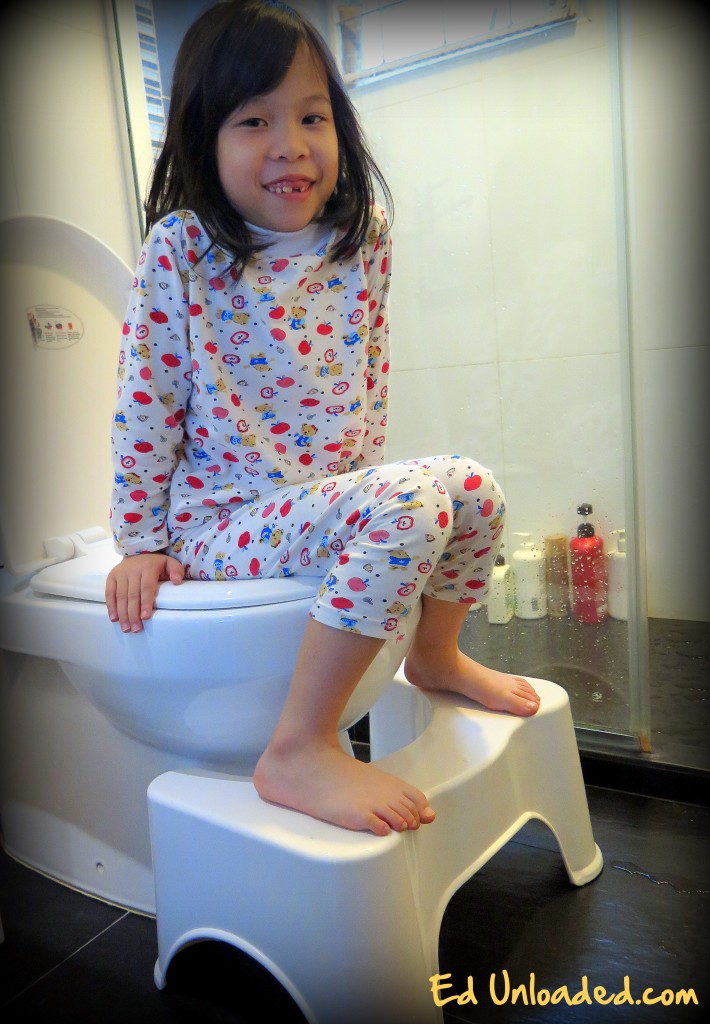
Monthly baby
Photo: Caroline Arber, globallookpress.comConstipation in a baby up to 6 months, as in a newborn, is usually associated with the mother's diet and feeding regimen. First of all, it is necessary to exclude products that contribute to constipation, adjust the frequency and volume of feedings, and establish the drinking regimen of mother and child.
When formula feeding, it is worth changing the mixture. And in this case, it is also important not to forget about therapeutic abdominal massage and exercises.
Baby
Many babies have problems introducing complementary foods. When a child gets acquainted with new products, this, on the one hand, helps to establish peristalsis, and on the other hand, increases the risk of constipation.
By 6 months, the baby is already trying to control bowel movements. If the baby understands that after the toilet he has unpleasant sensations: itching, burning and other painful symptoms, he tries to restrain the urge.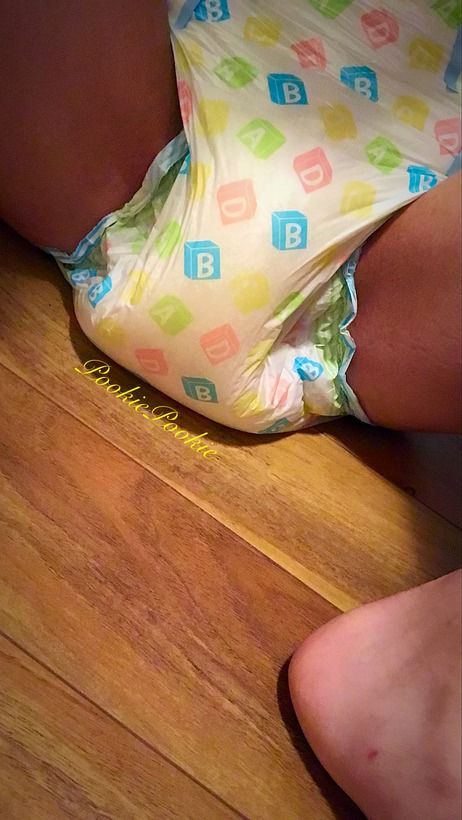 Therefore, with constipation, you can not hesitate, you need to immediately adjust the diet of the child. For example, you can introduce fiber with complementary foods, it is contained in mashed potatoes from zucchini, carrots and other vegetables. Thanks to plant fibers, which attract everything unnecessary to the body, fecal masses are formed.
Therefore, with constipation, you can not hesitate, you need to immediately adjust the diet of the child. For example, you can introduce fiber with complementary foods, it is contained in mashed potatoes from zucchini, carrots and other vegetables. Thanks to plant fibers, which attract everything unnecessary to the body, fecal masses are formed.
A well-chosen diet helps the intestines to master the correct peristalsis. Also, do not forget about the drinking regimen.
Children older than one year
When we talk about constipation in children older than one year, it is worth noting that the reasons for this may also be associated with a violation of the diet, drinking and physical activity. In older children, “psychological” constipation is common. The reasons for this phenomenon can be:
- discontent of parents or even punishment for failures in potty training0704
- stress during adjustment to kindergarten,
- mom and dad divorce,
- moving,
- any other stressful situations or banal embarrassment when visiting shared toilets.

In order to solve the problem of constipation, it is worth finding the root cause. Contacting a doctor or a psychologist will help parents and the child solve this problem.
Adolescents
As children get older, they become more independent - this also applies to diet. The menu may include more sweets and fast food. If, in addition to this, a teenager spends a lot of time at a computer or TV, moves little, there may be a problem with bowel movements. And in this case, a change in diet, diet and physical activity will also help get rid of constipation.
Prevention of constipation in children at home
Speaking about the prevention of constipation, doctors advise starting with the organization of nutrition and drinking regimen. From the diet, it is worth excluding foods that have an astringent effect and food that slows down intestinal motility: crackers, drying, rice, jelly and mucous decoctions, bananas, blueberries, persimmons, pears, pomegranates, quince, chocolate, strong tea, coffee.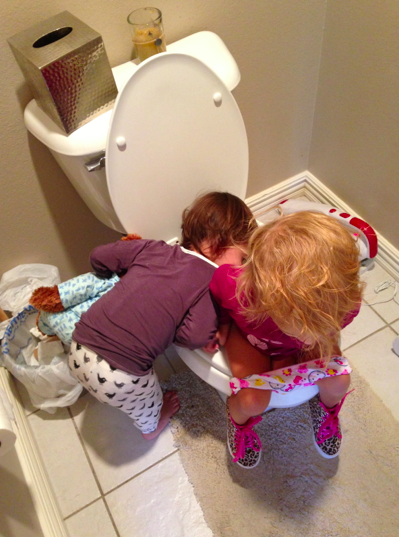 Vegetables rich in essential oils such as radishes, radishes, turnips, garlic, onions, and mushrooms should not be consumed in large quantities. Be wary of foods that increase gas formation: grapes, milk, cabbage and legumes.
Vegetables rich in essential oils such as radishes, radishes, turnips, garlic, onions, and mushrooms should not be consumed in large quantities. Be wary of foods that increase gas formation: grapes, milk, cabbage and legumes.
When compiling the diet, emphasis is placed on foods rich in fiber: vegetables and fruits, decoctions, infusions, muesli and dried fruit puree, oat and wheat bran. Include in the child's diet more coarse-fibered cereals and wholemeal cereals, vegetable soups, vegetable oil, seaweed salads and fresh herbs. Fermented milk products enriched with bifidus and lactobacilli also contribute to the proper functioning of the digestive tract.
Don't forget to give your child water. In addition to water, you can offer your baby a variety of fruit drinks and compotes, freshly squeezed diluted juices.
In addition to the diet, the regularity of food intake is also important. It is necessary to give preference to regular full-fledged meals from several dishes, to exclude dry food and harmful snacks.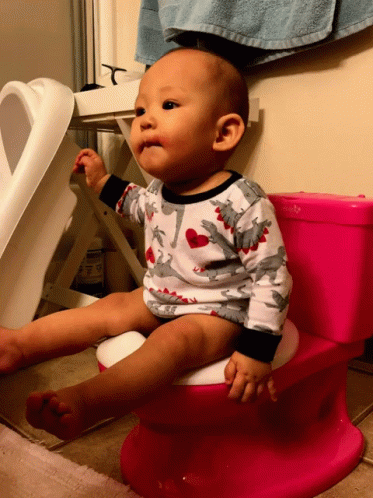
Also pay attention to the physical activity of the child: sports and walking will be beneficial. Special gymnastics can also help in the fight against constipation. The doctor will select exercises in a certain sequence that will stimulate peristalsis. Give your baby a light massage of the abdomen in a clockwise direction, it will also help facilitate the process of emptying the intestines.
It is also important to teach the child to sit properly during a bowel movement: the hips should be bent, the legs on the floor, it is better if the knees are slightly raised (you can put a low bench or stool under your feet), the torso should be tilted forward. This pose helps to cleanse the intestines.
Doctors' comments
— Constipation is quite common among children. The chair becomes less frequent, denser, larger in volume / diameter and, of course, this causes discomfort to the child.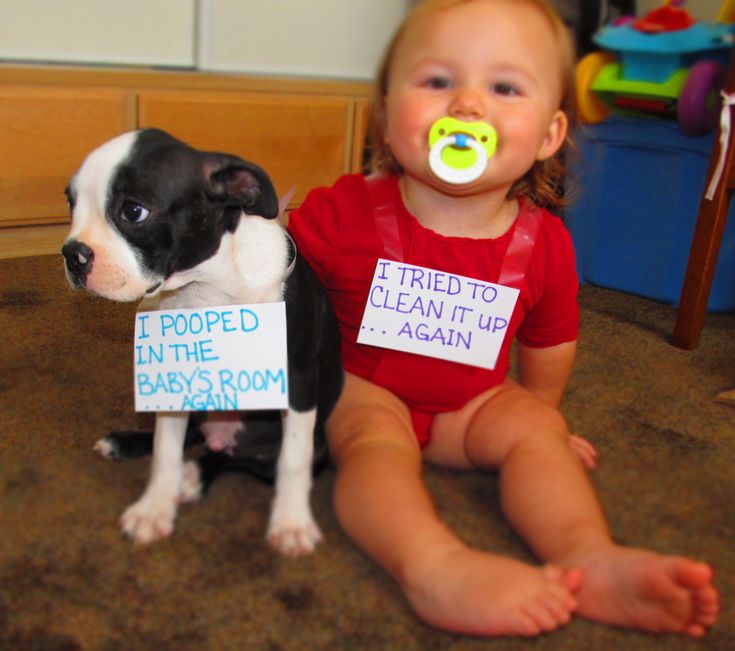 It is not surprising that the baby will try to avoid this unpleasant process - this is what constipation is dangerous for: a so-called vicious circle is formed: the feces are large, hard, the child hurts, he holds back the urge, and so on in a circle. Therefore, the process can become chronic, explains Albina Yusupova, pediatrician, neonatologist, doctor of evidence-based medicine . - Anal fissures, encopresis (fecal incontinence), stool smearing may also develop. Newborns may also have a problem with stool, but here the diagnostic search is slightly different. It is necessary to exclude infantile dyschezia, congenital pathologies, check the correctness of the selected nutrition, if the child is on the mixture. A pediatrician during a routine examination may well cope with this task. There is no specific prevention, we pay attention to nutrition (sufficient content of vegetables and fruits, fiber, cereals), drinking regime, physical activity. Often, children begin to hide during the act of defecation, stand in a certain position, in which it is easier for them.
It is not surprising that the baby will try to avoid this unpleasant process - this is what constipation is dangerous for: a so-called vicious circle is formed: the feces are large, hard, the child hurts, he holds back the urge, and so on in a circle. Therefore, the process can become chronic, explains Albina Yusupova, pediatrician, neonatologist, doctor of evidence-based medicine . - Anal fissures, encopresis (fecal incontinence), stool smearing may also develop. Newborns may also have a problem with stool, but here the diagnostic search is slightly different. It is necessary to exclude infantile dyschezia, congenital pathologies, check the correctness of the selected nutrition, if the child is on the mixture. A pediatrician during a routine examination may well cope with this task. There is no specific prevention, we pay attention to nutrition (sufficient content of vegetables and fruits, fiber, cereals), drinking regime, physical activity. Often, children begin to hide during the act of defecation, stand in a certain position, in which it is easier for them.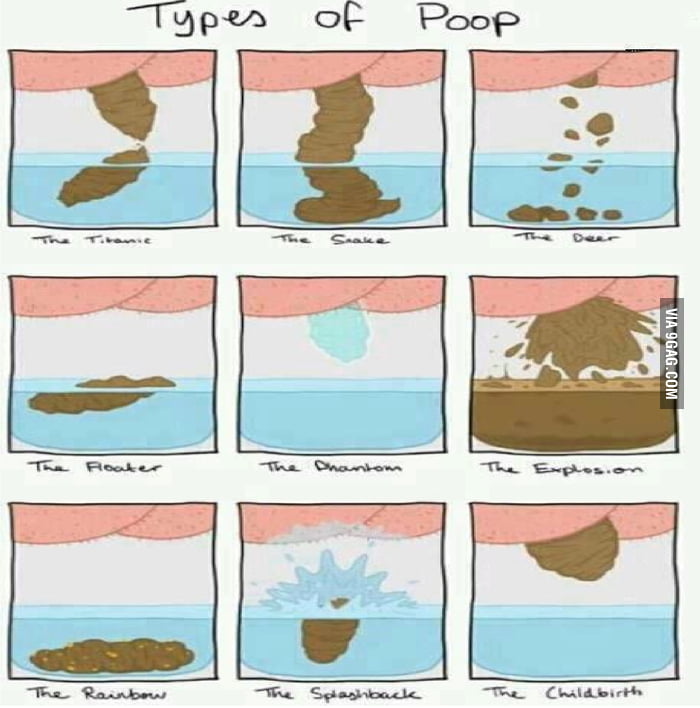 It happens that the discomfort is so strong that it can be accompanied by crying. Parents may be alerted by soiled panties - stone smearing. It is also worth paying attention to the pediatrician at the reception. It is better not to use folk remedies. There are effective drugs - laxatives, which help quite quickly and effectively with constipation. Dosage and duration is selected individually.
It happens that the discomfort is so strong that it can be accompanied by crying. Parents may be alerted by soiled panties - stone smearing. It is also worth paying attention to the pediatrician at the reception. It is better not to use folk remedies. There are effective drugs - laxatives, which help quite quickly and effectively with constipation. Dosage and duration is selected individually.
- Problems with stool in children begin in infancy. When a baby is born, it does not yet know how to empty its intestines. This is due to the fact that the baby's nervous system is only maturing, namely, it controls the motility of all parts of the intestine and establishes the interaction of the departments, - notes pediatrician Larisa Kholodnova. - First, the original feces - meconium - must pass. This chair will be dark green in color. After it, the baby on breastfeeding will begin a yellow mushy stool with white lumps, in children on the mixture it may be greenish without impurities.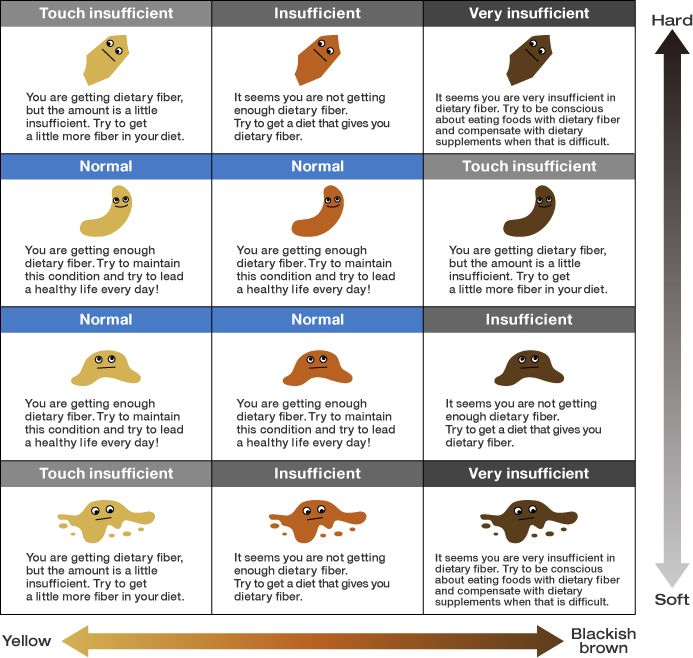 This stage is marked by colic. When the baby learns to empty the intestines, how to help him? It is important to properly attach the baby to the breast/air release bottle. This is a 50% success rate in terms of preventing colic. The baby should not swallow air, an absolute vacuum is needed. The next assistant will be simethicone drops and other drugs for colic. As a rule, they should be given before each feeding (at least 5 drops). It works like this: the drops remove the already formed air and partially help eliminate those gases that are still being formed during the digestion process. So a painful "air plug" does not form in the tummy. We give a larger portion at night, up to 10 drops.
This stage is marked by colic. When the baby learns to empty the intestines, how to help him? It is important to properly attach the baby to the breast/air release bottle. This is a 50% success rate in terms of preventing colic. The baby should not swallow air, an absolute vacuum is needed. The next assistant will be simethicone drops and other drugs for colic. As a rule, they should be given before each feeding (at least 5 drops). It works like this: the drops remove the already formed air and partially help eliminate those gases that are still being formed during the digestion process. So a painful "air plug" does not form in the tummy. We give a larger portion at night, up to 10 drops.
Laying out on the stomach and rhythmic stroking, swaying the stomach, leg work - all these actions are aimed at the natural release of the intestines from gases. Rhythmic swaying (right-left with palms 2 times per second) and stroking the tummy clockwise additionally triggers motor skills, helps to empty. You need to perform exercises every day, but not immediately after eating. After the parents have coped with colic, an interesting stage begins - complementary foods. Against the background of the first meals, the stool may become more rare. When should you see a doctor? You can come to the reception on the day of a healthy child at any time with any question. Sometimes, right during the examination under the warm hands of a doctor, the baby can give out what he has been holding for a couple of days. Massage also helps.
You need to perform exercises every day, but not immediately after eating. After the parents have coped with colic, an interesting stage begins - complementary foods. Against the background of the first meals, the stool may become more rare. When should you see a doctor? You can come to the reception on the day of a healthy child at any time with any question. Sometimes, right during the examination under the warm hands of a doctor, the baby can give out what he has been holding for a couple of days. Massage also helps.
Normally, a child can hold stool for up to 5 days, if the child is active and does not show anxiety. If you do not want to wait so long, you can help the baby after 24 hours after the last stool with glycerin suppositories (for children or 1/4 adult) or microclysters. In addition, try adding fiber-rich foods to your diet: plums, dried apricots or apricots, watermelon, compote, and ready-made fiber products. Since fiber is not digested, it comes out unchanged with a pronounced stimulating effect on intestinal motility. The chair mode will definitely be restored.
The chair mode will definitely be restored.
It is important that the diet also has a routine: at least 3 meals at the same time every day. This adapts the biological clock and synchronizes the rhythms of digestion at all stages. Stool retention and soreness of gases in school-age children can be associated with both a defect in the regimen and a more dangerous condition - developing appendicitis. Therefore, any pain in the abdomen cannot be ignored and it is imperative to see a qualified pediatrician.
Popular questions and answers
If a child cannot go for a long time in a big way, parents have a lot of questions. We answer the most popular.
What other symptoms may accompany constipation in a child?
Characteristic signs of constipation:
• inability to empty the bowels or decrease in the frequency of bowel movements for more than 2-3 days,
• occurrence of intestinal colic and flatulence,
• worsening of the general condition,
• intoxication of the body (with prolonged absence of bowel movements).
The following are also considered symptoms of constipation in children:
• hardening of the feces,
• discomfort in the anus,
• painful defecation,
• appearance of blood particles in the stool,
• cramping abdominal pain,
• general weakness and increased fatigue.
Skin rash, weight loss and nausea can also be symptoms of stool retention.
Should a child's diet be revised if he is experiencing constipation?
A special diet is a key aspect of the complex treatment of constipation. When compiling the menu, give preference to products with a laxative effect: carrot juice, kefir with a small addition of vegetable oil, prunes, boiled beets, potato juice with honey, as well as fresh apricots or dried apricots.
Can folk remedies help with constipation in a child?
Many parents, not wanting to use medication, are looking for the safest ways to treat constipation and resort to folk remedies. But with such methods you need to be extremely careful, since folk remedies have their own contraindications.
